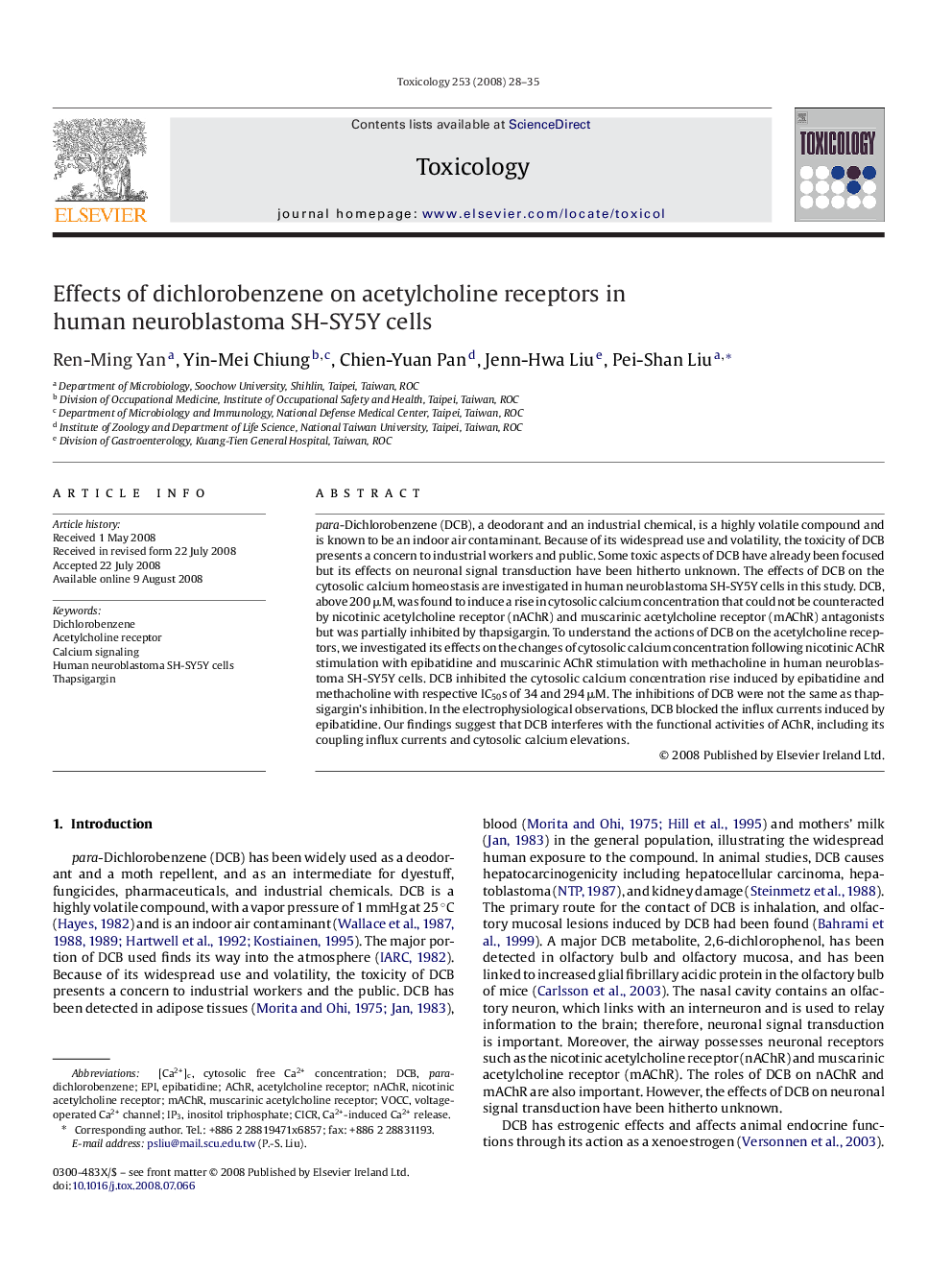| Article ID | Journal | Published Year | Pages | File Type |
|---|---|---|---|---|
| 2597060 | Toxicology | 2008 | 8 Pages |
para-Dichlorobenzene (DCB), a deodorant and an industrial chemical, is a highly volatile compound and is known to be an indoor air contaminant. Because of its widespread use and volatility, the toxicity of DCB presents a concern to industrial workers and public. Some toxic aspects of DCB have already been focused but its effects on neuronal signal transduction have been hitherto unknown. The effects of DCB on the cytosolic calcium homeostasis are investigated in human neuroblastoma SH-SY5Y cells in this study. DCB, above 200 μM, was found to induce a rise in cytosolic calcium concentration that could not be counteracted by nicotinic acetylcholine receptor (nAChR) and muscarinic acetylcholine receptor (mAChR) antagonists but was partially inhibited by thapsigargin. To understand the actions of DCB on the acetylcholine receptors, we investigated its effects on the changes of cytosolic calcium concentration following nicotinic AChR stimulation with epibatidine and muscarinic AChR stimulation with methacholine in human neuroblastoma SH-SY5Y cells. DCB inhibited the cytosolic calcium concentration rise induced by epibatidine and methacholine with respective IC50s of 34 and 294 μM. The inhibitions of DCB were not the same as thapsigargin’s inhibition. In the electrophysiological observations, DCB blocked the influx currents induced by epibatidine. Our findings suggest that DCB interferes with the functional activities of AChR, including its coupling influx currents and cytosolic calcium elevations.
